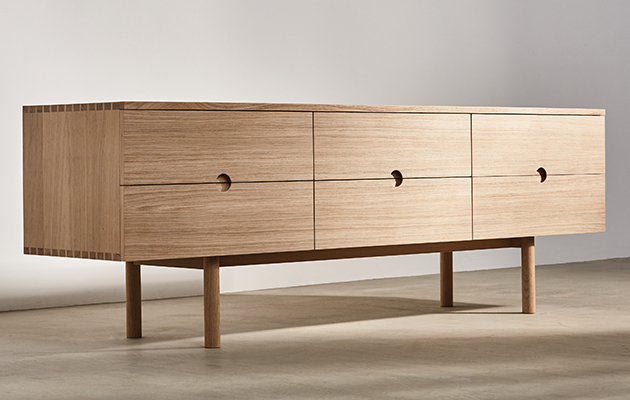
Founder Sean Sutcliffe talks to Bryony Hancock about his craft values, and reflects on how the furniture company has evolved since its first appearance at 100% Design in the 1990s
ICON: You exhibited at the first 100% Design, held at Earl’s Court. Did the fair have an impact on your career?
Sean Sutcliffe: In those days, 100% Design was the bedrock of the London Design Festival. It had critical mass; there were no other satellite shows, so it was 100% Design or nothing. It was a breath of fresh air, almost like bringing a mini-Milan to the UK. For Benchmark it was our first public platform – we’d had ten years of making furniture for restaurants by then, but we were only known within our group of existing clientele.
ICON: What led you to Sir Terence Conran, and to found Benchmark?
SS: I met Terence as a mature student at Parnham Furniture College in Dorset, where he was a visiting lecturer. We got chatting and after I said that I wanted to set up a workshop, he suggested using the empty stable block where Habitat used to be. Initially, we did prototyping for the Conran Shop, Mothercare and Habitat. Then, I wanted to have a business of my own, so Terence and I formed Benchmark.

ICON: Benchmark was a pioneer of sustainable design. How did you implement this?
SS: When I was a student in the early 1980s, people didn’t talk about sustainability. But I was lucky to encounter Jonathon Porritt, head of the Green Party. Since then sustainable timber sourcing has been a central tenet of the way we work: it’s the old hippie in me. It’s also important to sell your green credentials to your staff. Only after working with companies like the Eden Project did our staff say, ‘Oh, that’s good business, isn’t it?’ When sustainability makes business sense, you can convince your team it’s the way forward.
ICON: What is the importance of craft and artisanship in the contemporary world?
SS: In our Western world people have far too much stuff, therefore the value of owning material goods is diminished. However, I think there is a quality and an energy to handmade things. All the love that designers put into the process is embedded within the object. I’ve filled my house with handmade things. Whether it’s wine glasses, plates or chairs, I make all my everyday points of contact ones that have that handmade energy.

ICON: What would you say defines a good item of furniture?
SS: It’s when something hits the sweet spot between function, aesthetic and tactile pleasure. There is an intrinsic rightness about an object that’s had the right amount of thought process applied. You can hear a wrong note in a piece of music, just as you can see a wrong detail on a chair. Obviously, ergonomics and functionality are crucial, but the magic ingredient is what the designer brings in the detail.
ICON: Benchmark uses some metals that seem relatively unconventional today like zinc, copper and pewter. What draws you to them?
SS: I’m very big on tactility. Man has a natural affinity with wood because it’s our oldest friend and it’s the same with these metals. They’ve been around for thousands of years and patinate beautifully. We like to use metals with synergy, metals that resonate with human beings, and zinc, copper and pewter have a visual softness.

ICON: Benchmark is exhibiting at 100% Design this September. What will you be showing?
SS: We’ll show our OVO range by Foster + Partners, including some new pieces that we’re starting to manufacture now. And we’ll also show our latest collaboration with Space Copenhagen, including some new additions that are recognisably in Benchmark’s handwriting.


















